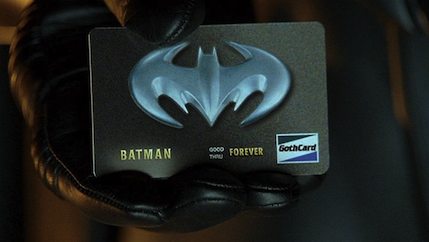It is very hard to find anything to say about Batman & Robin, Joel Schumacher’s second Batman movie, other than that it is bad. It owes its entire existence to commerce, greenlit upon the success of Batman Forever and rushed to completion at the earliest possible date, ultimately functioning more as a $125 million advertisement for toys than a movie.
It requires benefit of the doubt to even be called a movie, rather than a two-hour display of noise and flashing lights. The biggest flaw, the fatal one, is that Batman & Robin set out deliberately to be camp (without a steady grasp on what the term actually means), with Schumacher informing his cast via bullhorn, “We’re making a cartoon!”
Ironically, Schumacher is a bad enough director that in attempting to make a camp classic, he failed miserably, ending up with a loud, bizarrely dreary, stupid mess; if he’d tried to sincerely make the best movie he possibly could, he may very well have ended up with a camp classic.
Even exerting the energy to call Batman & Robin bad is offensive. It is constructed, artlessly and methodically, as “a Batman movie,” down to the self-defeating strategy—shared with Tim Burton’s Batman—of having the villain be billed above the hero. Not to be overly simplistic here, but the movie has the word “Batman” in the title. He should be the most important guy in the movie. But Arnold Schwarzenegger had it in his contract that he get top billing (as well as his $25 million salary) to play Mr. Freeze. Why? Why Mr. Freeze, not even an interesting villain? Why Arnold Schwarzenegger? The exact details are unknown, but Patrick Stewart had been cast as Mr. Freeze until one day Joel Schumacher decided he had to have Arnold. Joel Schumacher’s mind is an inscrutable, unknowable thing.
Allegedly, there’s a story buried somewhere in all the cacophonous nonsense, involving a fictional disease that killed Arnold’s wife, motivating him to become Mr. Freeze and turn to a life of low-temperature crime. Some sinister mad scientist turns Uma Thurman into Poison Ivy just because he’s evil, but she kills him. Batman and Robin meet Batgirl (Alicia Silverstone, written in solely due to having had a couple hits at the time the script was being written) and join forces. The collective might of our daring protagonists proves too much for Mr. Freeze and Poison Ivy to handle, and they end up getting chucked into Arkham Asylum, but not before Mr. Freeze gives them the cure to the fictional disease out of remorse or something so Alfred doesn’t have to die. Batgirl comes to stay at Wayne Manor. The end.
Repeating how bad Batman & Robin is would be beating a dead horse at this point. Suffice to say, Joel Schumacher publicly apologized for the movie, George Clooney—at the time known best for TV’s ER and trying to break into movies—has been half-joking for years about the fact that the first line of his obituary would read “played Batman.” Of all the actors cast, to that point, as Batman Clooney would easily be the most capable of handling both Batman and Bruce Wayne (a balance neither Keaton nor Kilmer found easy), if he only had a remotely competent movie in which to play the dual role. Instead, he looks a little overwhelmed by the magnitude of how terrible the movie is; in some scenes he looks like he’s just trying to survive the experience.
Although the movie didn’t lose money, Batman & Robin was nonetheless enough of an embarassment that it ended Schumacher’s reign as an A-list director and delayed Clooney’s ascent to movie stardom. More importantly for this discussion, it nearly killed the entire Batman movie franchise. It would take a few years and the advent of the concept of “rebooting” a movie franchise before a new cinematic take on Batman came along. It, most certainly, would be different.
Next, how Christopher Nolan resurrected Batman with a new origin story, in 2005’s Batman Begins.
Danny Bowes is a playwright, filmmaker and blogger. He is also a contributor to nytheatre.com and Premiere.com.










